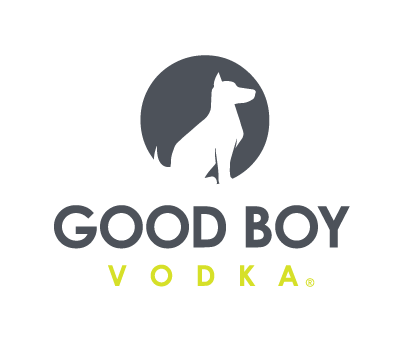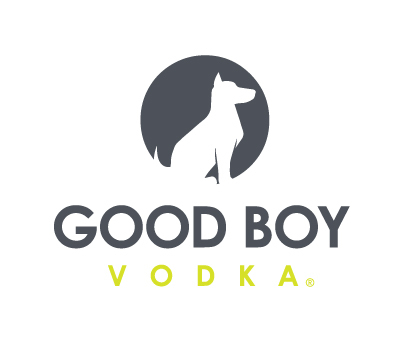Tony’s Chocolonely Puts ‘Lock’ On Co. Mission, Gives Key To Seth Goldman
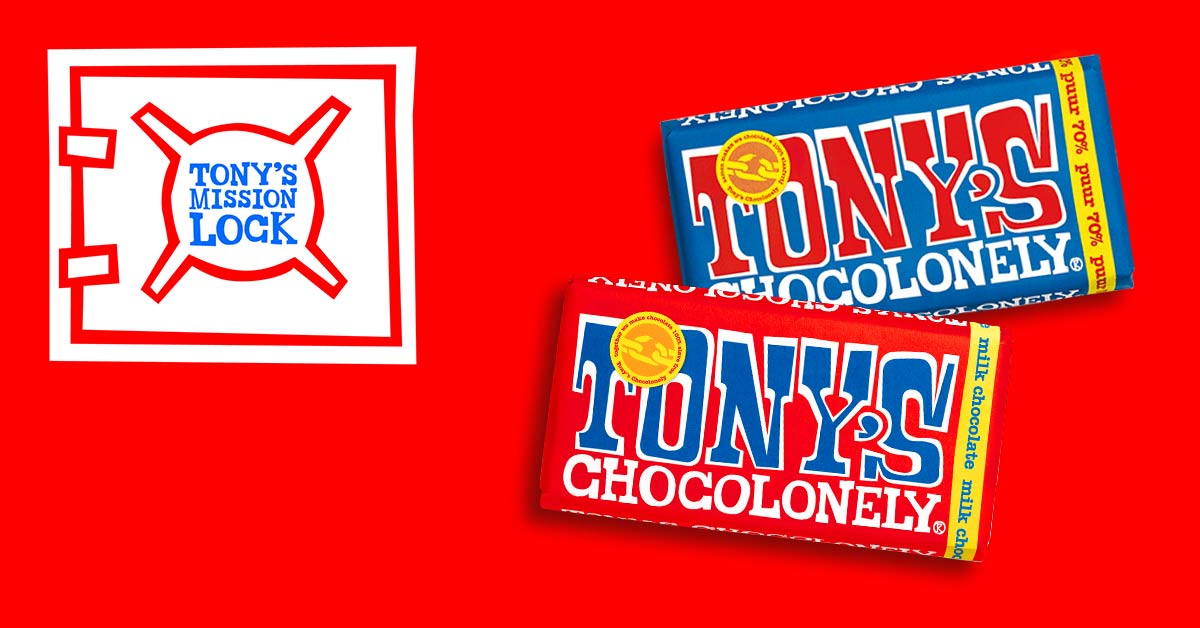
Tony’s Chocolonely is looking to set a new corporate standard that legally protects the values of mission-driven businesses.
This week, the Netherlands-based B-Corp chocolate company and cocoa sourcing partner announced that its mission to eliminate child and illegal labor in the chocolate supply chain has been enrobed in a new “future-proofed governance structure” chaired by Eat the Change Founder and CEO Seth Goldman.
“Many times, we have witnessed mission-led businesses losing their way,” said Tony’s CEO, Doug Lamont, in a statement. “Passionate founders sell down their shares and are replaced at the helm, over time things dissipate, and in the end the very foundation of the company, its mission, crumbles. At Tony’s we are an impact company first and foremost, and our mission… is too important to just fade away in the future…Not now, not in 10 years’ time, not ever.”
The new governance structure – known as Tony’s Mission Lock – was developed over the course of 18 months and recently secured unanimous approval from the company’s board. Two individuals – Anne Wil Dijkstra, ex-Co-Captain of Tony’s, and Ikeena Azuike, a former lawyer turned social activist and broadcaster – will join Goldman at the top of this framework to serve as “Mission Guardians.”
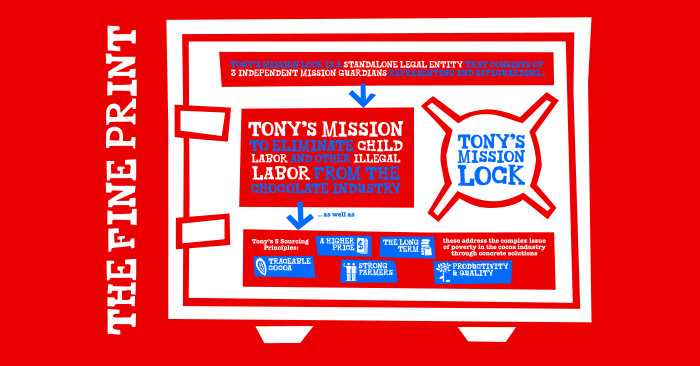
What is the Mission Lock?
The Mission Lock is a legal structure that gives a “golden share” of Tony’s to a new, independent foundation, overseen by the Guardians. The structure allows for any stakeholder – including Tony’s customers – to file a complaint at any point if they believe the company is straying from its purpose. That golden share then gives the guardians ultimate authority to veto the situation or decision in question. All business matters relative to Tony’s mission must be approved by the guardians as well.
Though “golden shares” do not hold economic value, they also can’t be taken away regardless of future changes to the company’s shareholder structure. Tony’s Articles of Association already outlines its Chiefs’ legal responsibilities to uphold its mission and 5 Sourcing Principles, but this added layer creates a legally binding framework for Tony’s leaders to continuously defend those values.
Within the Mission Lock, Goldman, Wil Dijkstra and Azuike are also entitled to publicly call out any potential wrongdoing or issues if the first method for remediation – investigating the claim, discussing and suggesting a resolution to leadership – does not succeed.
These “secondary locks” or escalation levers include the right to publicize their concerns in a two-page spread in Tony’s annual impact report, the right to publish concerns in any national or international newspaper, and lastly, the right to refer the matter for a legal investigation and judgment by the Dutch Enterprise Chamber.
“We believe it to be a robust mechanism to protect our mission in perpetuity,” said Lamont.
What’s the potential impact?
Mission preservation is clearly the long term intention, but Tony’s hopes the realized impact of this structure will spread beyond the West African cocoa farmers it currently aims to protect. The company’s success will be determined by its ability to prove its structure is effective and impenetrable.
“Our sole responsibility is representing and safeguarding Tony’s Mission,” said Goldman in a LinkedIn post. “I think it’s worth mentioning that I am not, and don’t intend to be, a shareholder in Tony’s – that way we can always prioritize what’s in the best interests of the 5 Sourcing Principles. As far as I know, this is a first-of-its kind approach to protecting a brand’s mission, and we hope it can become a model for others to follow.”
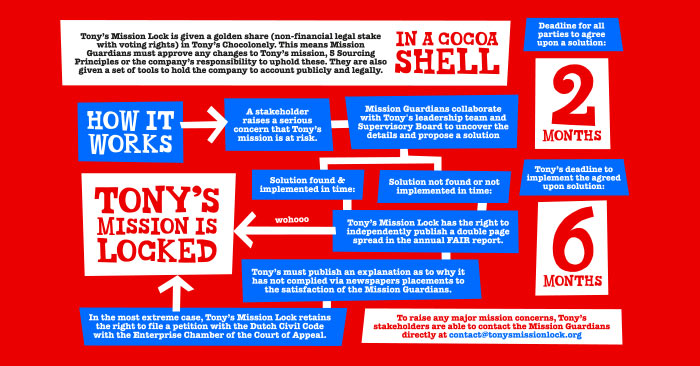
Lamont cited Goldman’s track record as an “impact entrepreneur,” as well as his experience running mission-driven businesses as the reason for this appointment. Additionally, with Wil Dijkstra’s experience working to sustain Tony’s mission, and Azuike’s history of social and climate activism as well as his legal background and first hand understanding of West Africa’s socio economic context, the Guardian team brings a breadth of “heavyweight experience.”
Alongside the announcement, Tony’s said it will release the full structure details and its approach to creating this framework so that other companies can replicate it for themselves. Lamont said he hopes this move will inspire others to take a similar approach and thus “raise the bar collectively.”
Who else has done this?
Though Lamont believes this may be a “first-of-a-kind” approach to structuring a corporate mission, last year outdoor apparel brand Patagonia, parent to regenerative-focused food brand Patagonia Provisions, also took a major step to protecting its mission for the future.
Similar to Tony’s, Patagonia implemented a new corporate leadership structure that is chaired by an independent trust and nonprofit foundation responsible for investing all company profits into climate change mitigation efforts. In doing so, Patagonia founder Yvon Chouinard said the company’s primary shareholder has become “the planet.” The move hones in on a concept known as the “steward-ownership” model which claims to reimagine typical corporate structures and prove that maximizing shareholder value can be done simultaneously, but second in command to, executing on a company’s mission and values.
“Like anything new and unproven, I’m sure we will learn along the way. But I also hope our approach can become a model for other purpose-driven brands,” Goldman said in a release.













